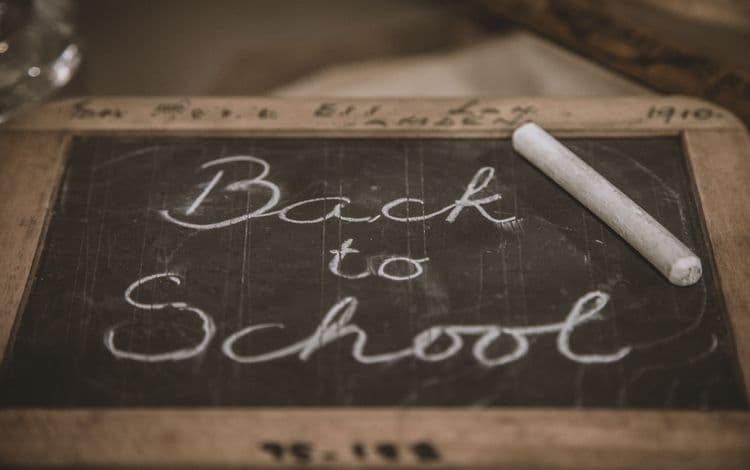Many parents are thinking the same thing right about now…Will there be actual school in the fall? Certainly, we've all seen states push to get small businesses open, to get hair salons and restaurants back up and running, but the school question is still a lingering one for many states. And no definitive answers seem to forthcoming, as of yet.
We need to be looking at the long term ramifications of leaving kids out of school this fall and simply resuming the homeschooling route that many were forced to undertake as the coronavirus progressed.
Many people feel that states are not currently doing enough to actively move the education system toward a reopening date. While concern over small businesses and professional service reopenings are evident, individuals are wondering why this same sense of urgency is not being applied to the public education system.
The argument seems to be that at least in the interim, distance learning is working. And for many kids in junior high and high school, this may be the case. However, when it comes to younger children, those first learning to read, those being initiated into the basics of math, the homeschooling option seems to be falling short. This doesn't even account for the fact that numerous kids, especially from lower-income homes, don't necessarily have adults around who can subsequently guide them through the educational process.
Without question, states need to do what is necessary to prevent a second round of outbreaks. But ensuring that school is back in session come fall safely and healthily should be among the country's top priorities at this juncture.
Why prolonged school closures are so harmful
Again, the primary ones being hurt in light of prolonged school closures are younger children and those who come from lower-income homes. Most experts agree on this and most experts believe that if the school does not open in the fall, we are going to see many kids fall behind academically—regardless of socioeconomic background.
A major issue concerns the stress put upon parents who are not teachers and yet are having to both works and homeschool their kids. Recent surveys have shown that mothers are carrying the weight of their educational responsibilities.
Additionally, the income gap does come into play here. Those who have white-collar jobs and can transition to remote work are going to have an easier time providing educational activities to their housebound kids. Whereas those who cannot afford to stay home and have no remote work option, are undoubtedly going to struggle. Not to mention, there is the issue of parents not having the ability or skills to teach the necessary material.
Of course, we are all just trying to make the best of this unprecedented situation. And yet, many are questioning the policy of relying heavily on school closures to help stem the spread of the virus.
Mayors and Governors in Tricky Positions
To put it plainly, many local officials are against keeping schools closed; they want nothing more than to be able to reopen in the fall, however, the problem is many such officials have no choice.
At the state and local levels, governments are currently in dire need of tax revenue—said revenue comes from businesses, not schools, and so the priority accordingly has been to push for business reopenings. And in the meantime, the focus on school reopening has been relegated to second-tier status. Schools are a cost to the state. Paying teachers and administrators to operate remotely is proving cheaper overall. Not to mention, the expense of extreme sanitizing efforts is mind-boggling to even begin to think about.
There are things Congress can do to help facilitate school reopening. For one, they might consider giving additional money to state and local governments thereby allowing them to ride out the loss of tax revenue and at the same time maintain the quality of public services. Without having to consistently worry about the lack of revenue, states would have a bit of breathing room to focus on how exactly to get schools back up and running.
The Worst-Case Scenario
Most do realize that schools are going to be among the most difficult places to monitor as far as sanitization and hygiene. With the number of germs circulating, how kids tend to rapidly spread colds and flu, there is cause for concern. And if there is potentially a fall coronavirus outbreak, schools could be hotspots. However, we can't necessarily live in fear of "what ifs," at least as far as school opening is concerned.
If infection rates stay low for the most part throughout the next couple of months, then schools should be cleared to reopen come the fall. Of course, there'd be measures put into place by way of precautions. Extra sanitation efforts, masking, monitoring students, and surveillance testing so that if someone is infected, the school would have the information necessary and thus could temporarily shut down. But if efforts to reopen schools across the country aren't put into place, then we are looking at a very grim scenario as far as the US education system is concerned.
Right now, as we speak, decision-makers are trying to come up with a variety of scenarios where schools are concerned—best and worst case. The problem is budget factors heavily into all state decisions and schools are more often than not budget breakers versus budget boosters. This is why federal help in this capacity truly is crucial.
At First Union Lending, we want to see small businesses up and running again. For many business owners, we do understand it is challenging with kids still at home. If you need additional capital for any reason, we can help. Our loan programs are fast and flexible. What's more, we can help you navigate the PPP process should you be interested in an SBA backed loan. Call today!
